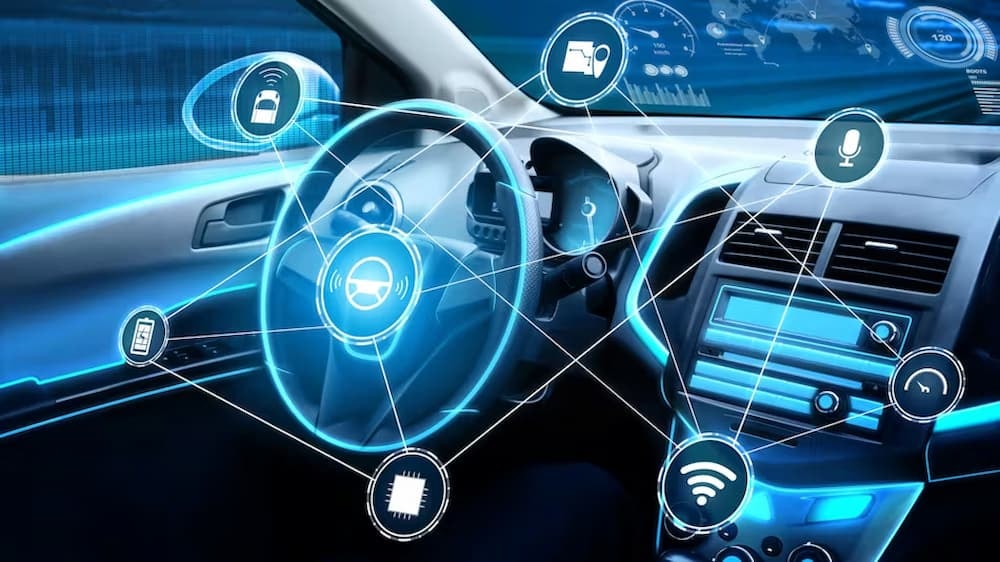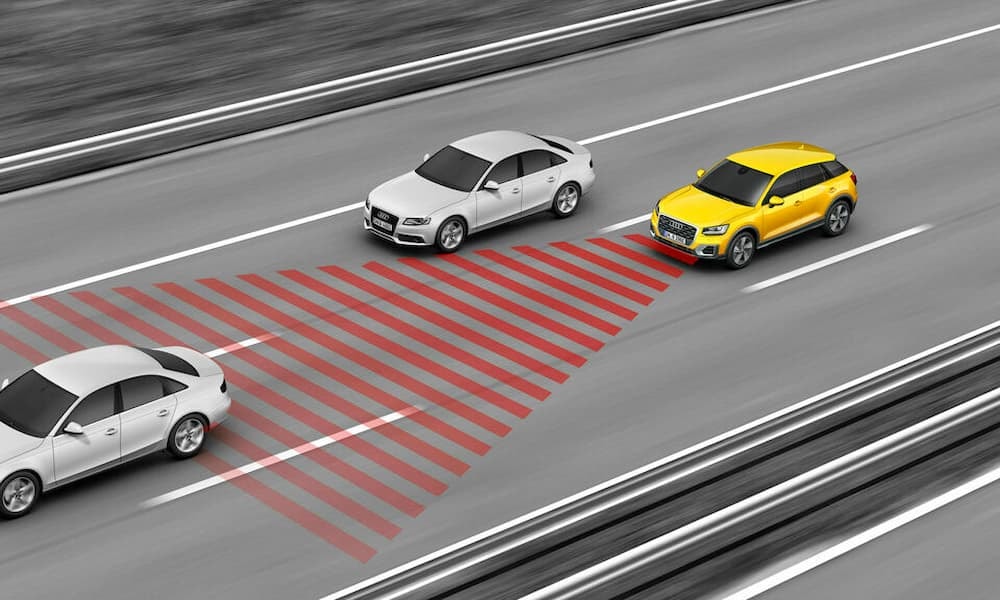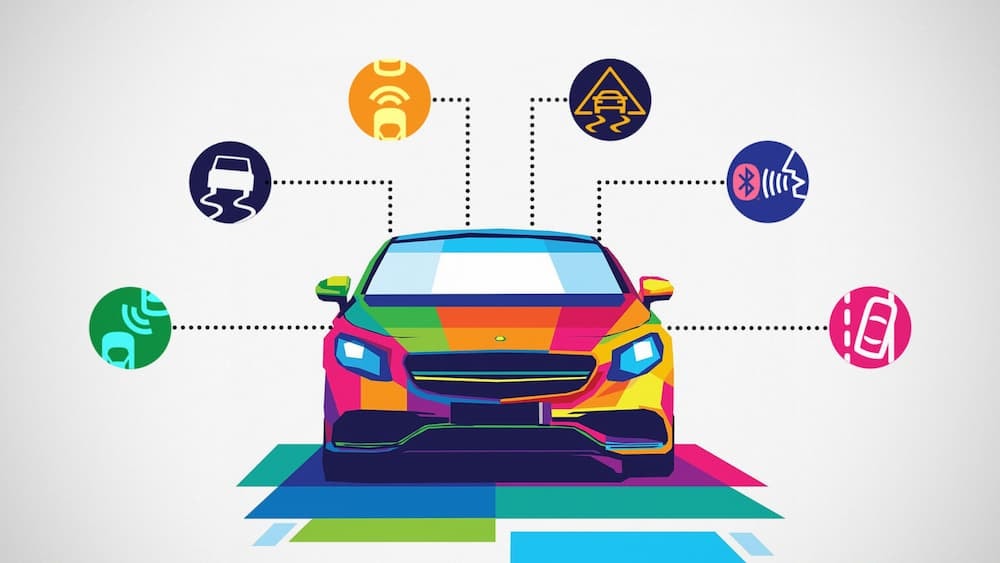ADAS (Advanced Driver Assistance Systems), or advanced driver assistance systems, are one of the key technologies that improve driving safety and driving comfort. Modern cars are equipped with increasingly advanced solutions that not only inform the driver about potential threats, but often directly react for him. How does the ADAS system work, what exactly does it include and what are its limitations? Let's check the details.
What is ADAS?
ADAS system is a set of technologies and sensors that support the driver while driving, parking, changing lanes and even braking in emergency situations. Advanced Driver Assistance Systems they operate on the basis of data from cameras, radars, lidars, ultrasonic sensors, as well as GPS systems and digital maps. The aim is increased security, decrease accident risks and making vehicle operation easier in difficult conditions.
Depending on the level of advancement, ADAS can offer both passive, What active support. In the passive version the system only informs the driver about the threat, and in the active version takes actions to avoid it.

The most important systems included in ADAS
The composition ADAS system includes many functions that can be divided into several groups depending on their purpose:
1. Recognition and response systems
- Traffic sign recognition system – uses a camera mounted on windshieldto analyze and interpret road signs. This system is key to functions such as speed assistant, Whether ISA system.
- Recognition system and object identification – detects obstacles, pedestrians, cyclists and other vehicles.
- Pedestrian Detection System – in combination with the camera and radars, it reacts when a pedestrian is in the driving path.
2. Maneuvering assistance systems
- Park Assist – enables automatic longitudinal and perpendicular parking, often using ultrasonic sensors and Reversing cameras.
- Parking Space Detection System – analyzes the availability of parking spaces and helps the driver find them.
- Parking sensors – inform about obstacles in the vehicle’s surroundings, which makes maneuvering much easier.

3. Driving assistance and safety systems
- Lane control system - monitors driving track and warns when the vehicle unintentionally leaves its lane.
- Lane Keeping Assistant – actively corrects the driving path if the system detects that the vehicle is drifting out of its lane without using the turn signal.
- Blind spot monitoring (spot monitoring) – a system using radars and side mirrors, which warns of vehicles that are out of the driver's sight.
- Turn assistant – helps avoid collisions when turning by analyzing the situation around the vehicle.
4. Emergency and adaptive systems
- Automatic Emergency Braking (AEB) – a system that recognizes the risk of collision and automatically activates emergency braking.
- Emergency braking system – often used in conjunction with other systems, e.g. pedestrian detection.
- Adaptive cruise control - adjusts vehicle speed to the road conditions and the distance from the vehicle in front.
- Active cruise control – maintains the set speed, but in a more advanced form responds to the movement of the surroundings.

How does ADAS work in practice?
The operation of ADAS systems is based on the cooperation of various sensors, cameras and analytical algorithms. Cameras placed on windshield, rear bumper Whether side mirrors transmit the image to the central on-board computer. This analyzes the data, compares it with digital maps and situation recognition algorithms, and then informs the driver or takes action.
In case of detection road signs, e.g. speed limits, the system may start Speed Assistant, which informs the driver or automatically adjusts vehicle speed. Similarly with pedestrian detection or vehicles in the blind spot – a warning or even an automatic reaction appears.
ADAS system benefits
Advanced driver assistance systems bring many benefits:
- They significantly affect increased security all road traffic participants,
- They prevent road accidents and collisions,
- They support driver's attention, especially on a long route or in difficult conditions,
- They are improving driving comfort and reduce stress,
- They facilitate parking and lane changing maneuvers,
- They are decreasing risk of accidents caused by driver fatigue.

Problems and limitations of ADAS systems
Despite its many advantages, ADAS (advanced driver assistance systems) is not without its flaws. The most frequently reported problems include:
- Limited effectiveness in bad weather conditions – rain, snow or fog may interfere with the operation of cameras and radars,
- False alarms – systems warn about obstacles that are not there or are harmless,
- Too much interference with driving – some drivers complain that the systems overcorrect driving track, which reduces comfort,
- Repair costs – sensors and cameras located outside the vehicle are vulnerable to damage and costly replacement,
- Need for calibration – after car repair or windscreen replacement it is necessary to reset the systems,
- Update dependency – without access to up-to-date maps and data, systems may operate ineffectively.
ZENBOX PRO – more control over technology
For drivers who want to have more control over the vehicle's operation and limit the interference of some systems, an innovative device has been created - ZENBOX PRO. This solution was created for those who value driving independence and an individual approach to driving.

ZENBOX PRO allows you to manage ADAS functions, including disabling selected system elements – e.g. Speed Assistant, Whether lane assistant. Thanks to this:
- You can adjust the system operation to your own preferences,
- You will avoid unnecessary warnings and interference,
- You will retain full control of the vehicle,
- The device does not negatively affect other systems,
- Installation does not affect the manufacturer's warranty.
In an era of increasing automation, ZENBOX PRO is a response to the needs of drivers who do not want to completely give up modern systems, but want to decide for themselves when and how to use them.
See also:
- Active vs. Passive Safety – What You Need to Know
- Start stop system - operation
- Mandatory passenger car equipment in 2025
- Character recognition system – how does it work?
- ISA System - How the Intelligent Speed Assistant Works
- Lane Assistant – How It Works
- Driver Fatigue Detection System – Does It Really Work?
- The most important safety systems in cars
